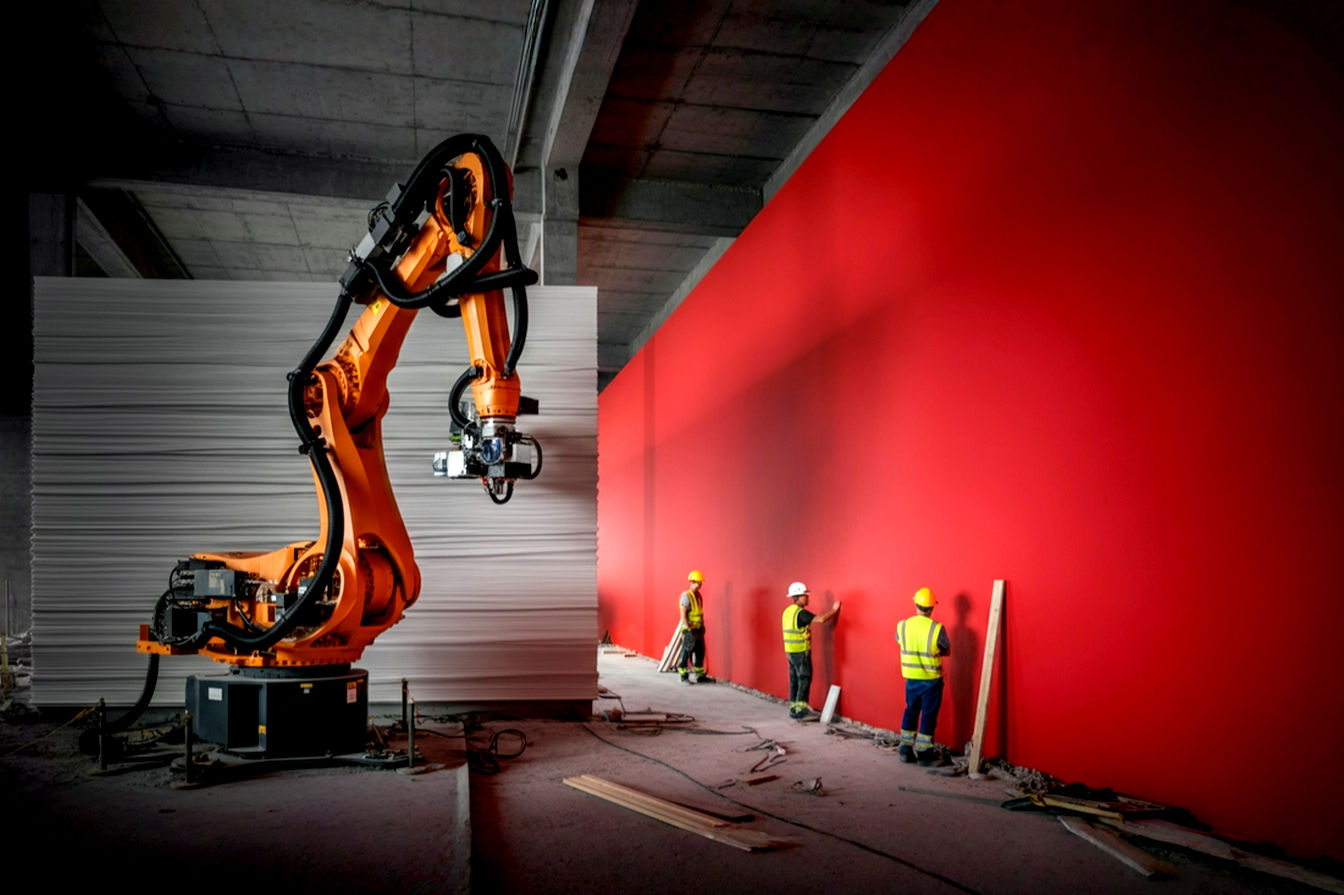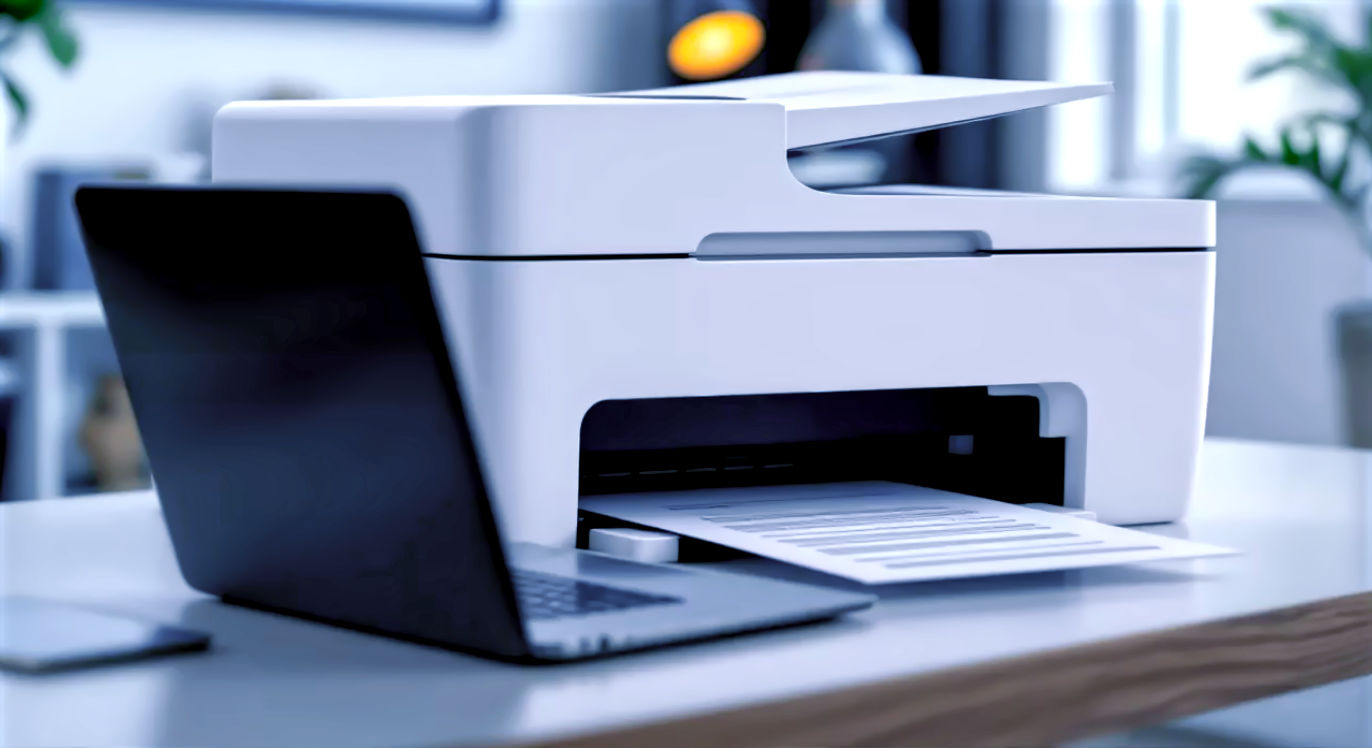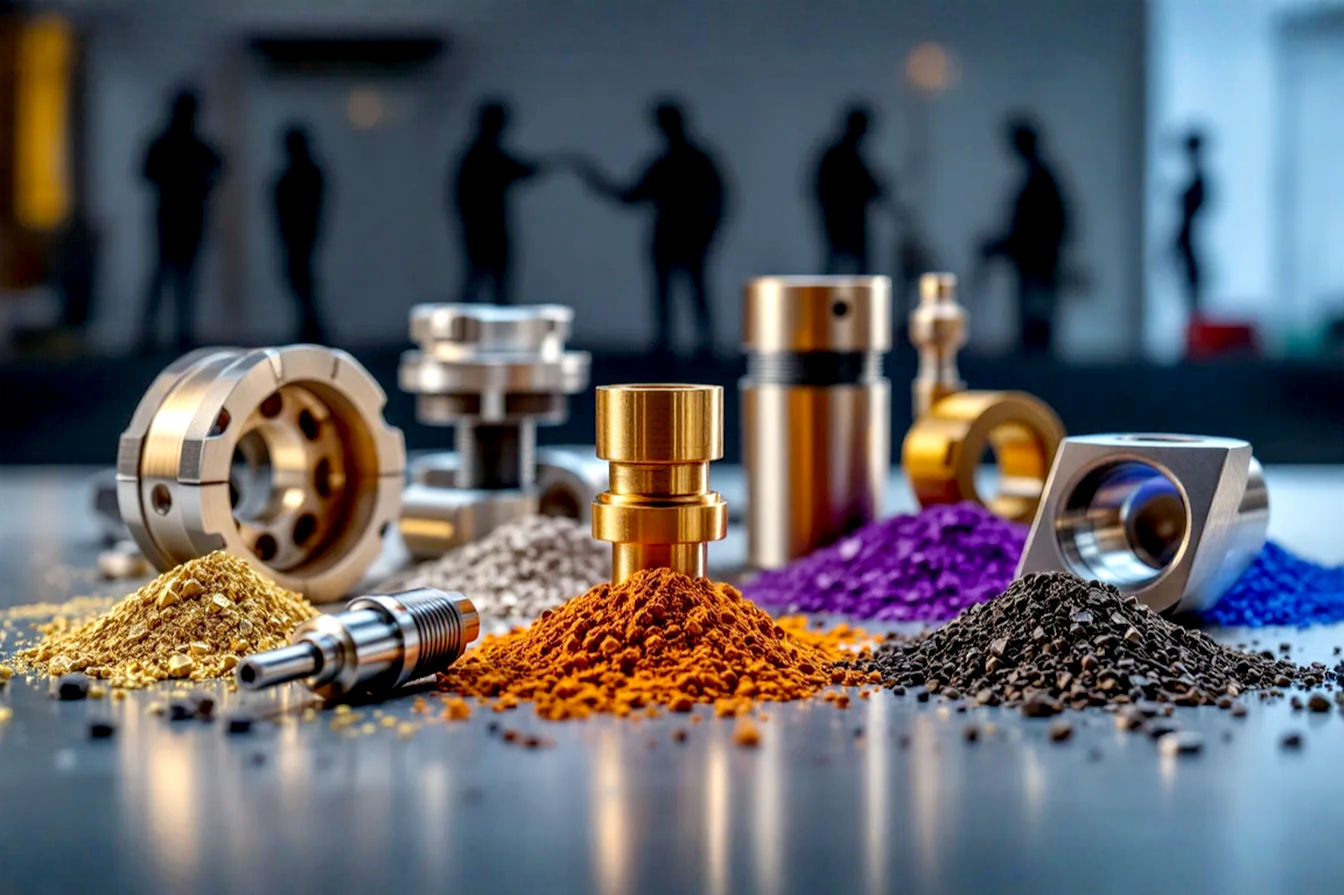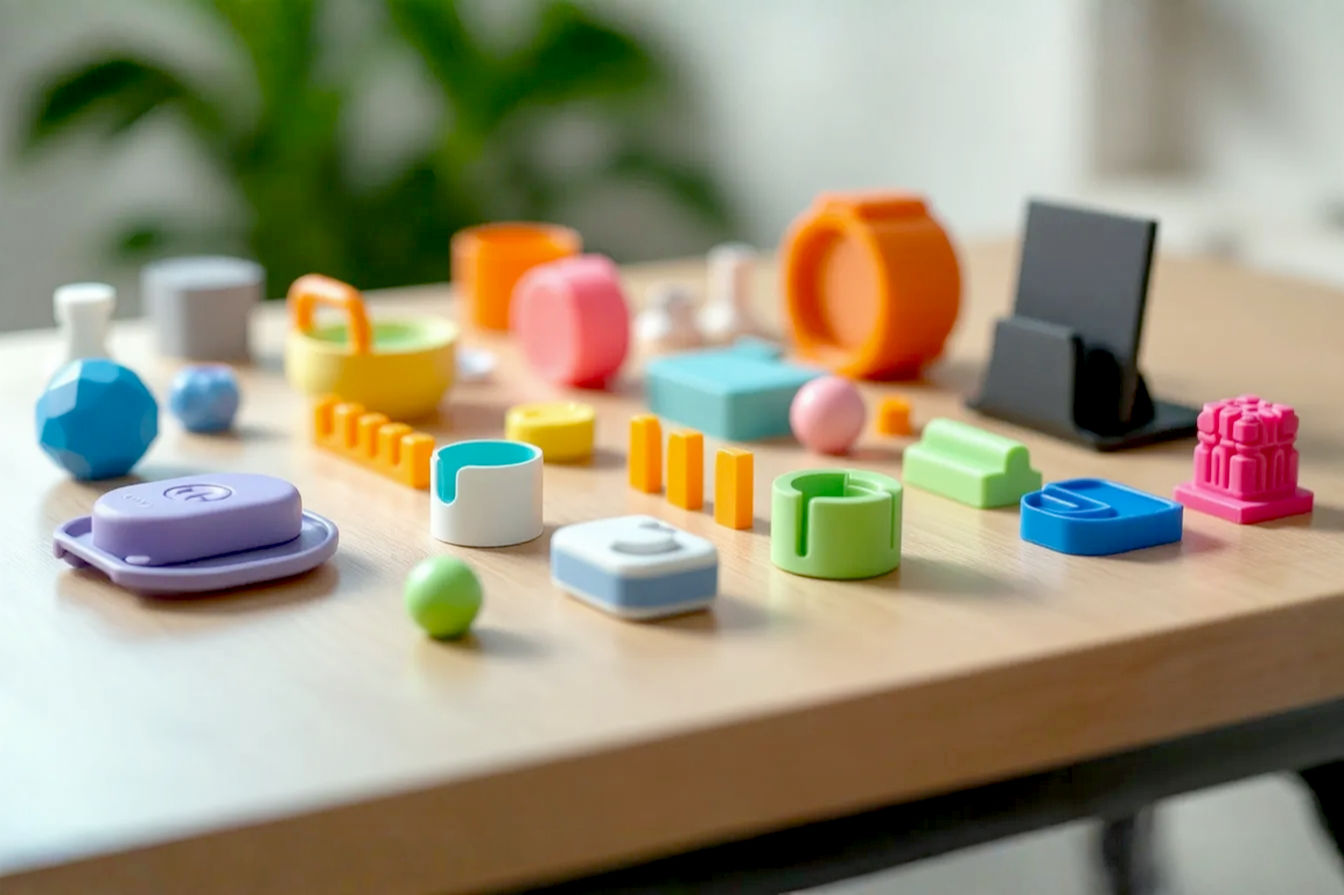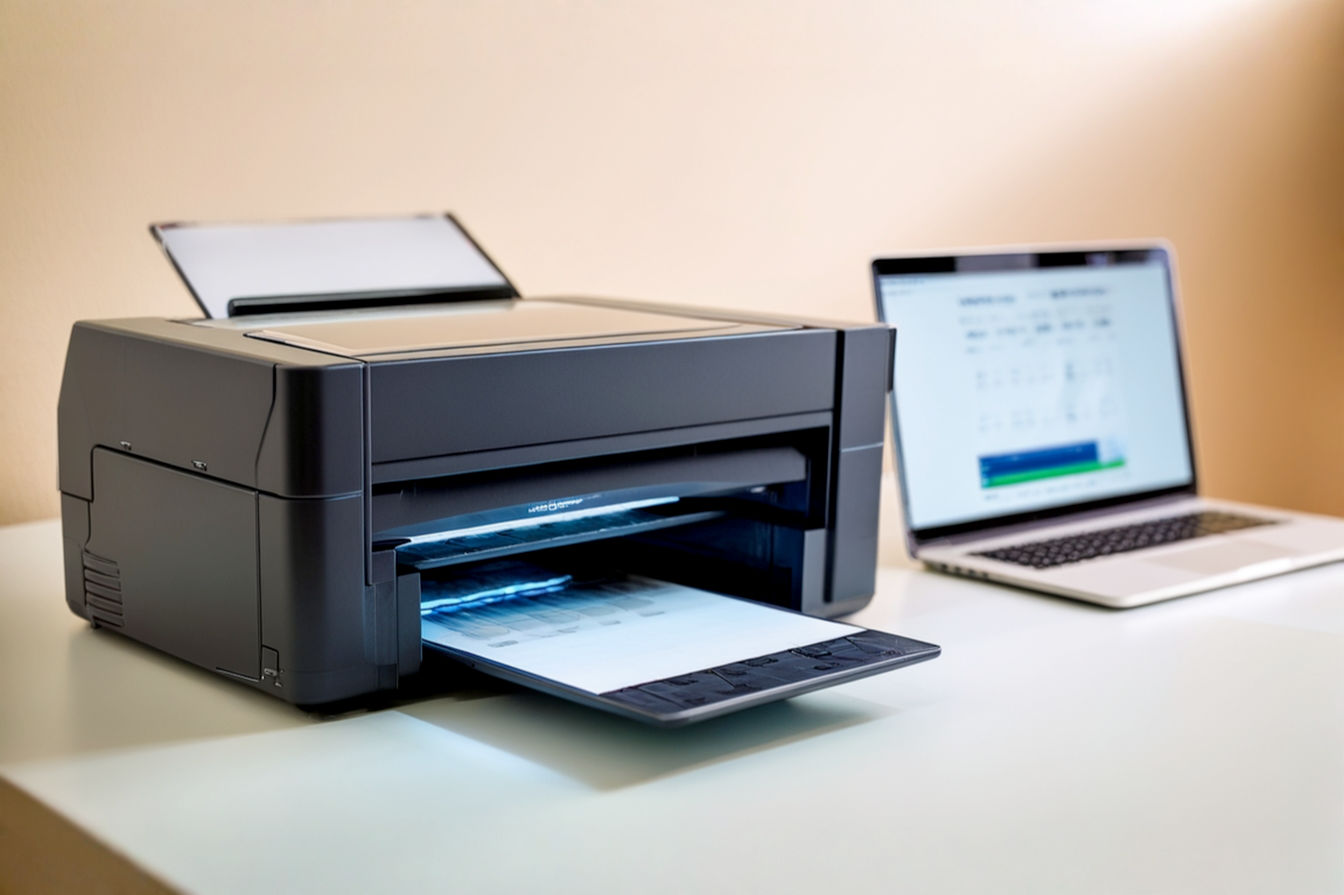This post may contain affiliate links. If you make a purchase through these links, we may earn a commission at no additional cost to you.
3D printing has opened up incredible possibilities, letting us bring digital designs into the physical world. You can create everything from functional prototypes to intricate artistic pieces right on your desktop. For many hobbyists and professionals, PLA (Polylactic Acid) is the go-to filament. It’s easy to print with, relatively inexpensive, and made from renewable resources like corn starch. It sounds perfect, right? Well, not always.
One of the most common frustrations users encounter with standard PLA is its tendency to be brittle. You print a beautiful part, remove it from the build plate, and snap – a thin wall breaks, or a corner chips off. This brittleness can limit the usefulness of PLA prints, especially for parts that need to withstand any stress or impact. It can make functional prints unreliable and even ruin aesthetic pieces during post-processing.
But what if there was an easy way to get the printability of PLA with significantly improved strength and durability? That’s where PLA+ comes in. Often marketed under various names like “enhanced PLA,” “tough PLA,” or simply “PLA Plus,” this modified version promises to solve the brittleness problem that plagues standard PLA. This article will dive deep into why standard PLA can be brittle and how PLA+ offers a compelling, often easy, solution. We’ll explore what makes PLA+ different, its benefits, when to use it, and how to get the best results when printing with it.
Understanding Why Standard PLA Can Be Brittle
Before we look at the solution, it helps to understand the problem. Why does standard PLA tend to be brittle, especially compared to other plastics used in 3D printing like ABS or PETG? The answer lies in its fundamental material properties and how it behaves under stress.
Standard PLA is a semi-crystalline thermoplastic polyester. This means its molecular structure contains both ordered (crystalline) and disordered (amorphous) regions. The ratio and arrangement of these regions significantly impact the material’s properties. In standard PLA, the crystalline structure contributes to its stiffness and relatively high tensile strength (resistance to being pulled apart). However, it also limits the material’s ability to deform plastically – that is, to bend or stretch significantly before breaking.
Think of it like a dry twig. It’s quite rigid and can support a load, but if you bend it too far, it snaps cleanly. This is characteristic of a brittle material. A more ductile material, like a green branch, would bend and deform significantly before breaking.
Several factors inherent to standard PLA contribute to this brittleness:
Low Impact Strength
Impact strength is a material’s ability to absorb energy when a sudden force is applied to it. Standard PLA generally has low impact strength. When a printed part is dropped or hit, the energy isn’t absorbed by deformation; instead, it causes cracks to propagate rapidly through the material, leading to fracture. This is a major reason why thin PLA walls or small features can break off easily.
On a molecular level, when an impact occurs, the polymer chains in standard PLA have limited ability to slide past each other or rearrange quickly to dissipate the energy. The stress concentrates at points of weakness, like layer lines or internal voids, leading to failure.
Limited Elongation at Break
Elongation at break is a measure of how much a material can stretch or deform before it fractures. Standard PLA typically has a low elongation at break percentage. This means it can only be stretched a small amount past its yield point (the point where it starts to deform permanently) before it breaks.
Materials with high elongation at break, like nylon or TPU, can stretch significantly, absorbing energy and deforming substantially before failing. Standard PLA’s limited ability to stretch contributes directly to its brittleness; there’s little “give” before it snaps.
Susceptibility to Moisture Absorption
While not as hygroscopic (water-absorbing) as nylon, standard PLA can still absorb moisture from the air over time. Moisture plasticizes the material, which might sound like it would make it less brittle, but it actually degrades the polymer chains through a process called hydrolysis.
Hydrolysis is a chemical reaction where water molecules break the ester bonds in the PLA polymer chains. This reduces the average molecular weight of the polymer, making the material weaker and, paradoxically, more brittle over the long term. Wet filament can also cause issues during printing, leading to inconsistent extrusion and weaker layer adhesion, further contributing to print brittleness.
Influence of Printing Parameters
Even with inherently brittle material like standard PLA, printing parameters play a significant role in the final part’s strength and brittleness.
- Print Temperature: Printing too cold can result in poor layer adhesion. Each layer doesn’t melt and fuse properly with the layer below it. This creates weak points where cracks can easily start and propagate, making the entire print brittle along the layer lines. Printing too hot can cause thermal degradation, weakening the material.
- Print Speed: Printing too fast, especially with complex geometries, can lead to inadequate cooling and poor layer bonding, increasing brittleness.
- Cooling: Excessive cooling can cause the material to solidify too quickly, preventing proper molecular entanglement between layers and increasing internal stresses, both of which can lead to brittleness.
- Layer Height: Thicker layers can sometimes be stronger due to better layer adhesion surface area, but very thin layers printed too fast or too cold can be extremely brittle.
- Infill Pattern and Density: Low infill density or patterns that don’t provide good internal support can result in prints that are easily crushed or broken.
Understanding these factors helps explain why your standard PLA prints might be failing when subjected to even minor stress. It’s a combination of the material’s inherent properties and how it’s processed during printing.
Introducing PLA+: The Enhanced Alternative
Recognizing the limitations of standard PLA, filament manufacturers developed PLA+. This modified version aims to retain the ease of printing associated with PLA while significantly improving its mechanical properties, particularly toughness and impact resistance.
So, what exactly is PLA+? It’s not a fundamentally different plastic, but rather standard PLA that has been blended with additives or modified during its polymerization process. The specific formulation varies between manufacturers, and they often keep their exact recipes proprietary. However, the goal is universally the same: to make the material less brittle and more durable.
The key difference lies in the inclusion of impact modifiers and sometimes other toughening agents. These additives are carefully chosen polymers or compounds that are blended with the base PLA resin. When the material solidifies, these modifiers create microscopic structures within the PLA matrix that can absorb energy during impact or bending.
How PLA+ Differs from Standard PLA
The primary distinction between standard PLA and PLA+ is the addition of modifiers designed to increase toughness and reduce brittleness.
- Molecular Structure: While still primarily Polylactic Acid, the presence of additives alters the overall morphology and behavior of the material. These modifiers often disrupt the formation of large, rigid crystalline structures or introduce flexible domains within the polymer matrix.
- Impact Modifiers: These are polymers or rubbery particles dispersed within the PLA. When the material is stressed, especially under impact, these particles can absorb and dissipate energy by deforming or debonding from the surrounding PLA matrix. This prevents cracks from growing and spreading, effectively toughening the material. Common types of impact modifiers used in plastics include acrylic-based modifiers, MBS (Methyl Methacrylate-Butadiene-Styrene), or other elastomer blends. The specific type and amount are crucial for achieving the desired balance of properties.
- Other Additives: Some PLA+ formulations might include plasticizers to increase flexibility slightly, nucleating agents to control crystallization, or even reinforcing fillers, although impact modification is the most common approach for “PLA+”.
The result of these modifications is a filament that behaves differently under stress than standard PLA. Instead of snapping cleanly, PLA+ parts tend to bend or deform more before breaking. They can absorb more energy from impacts, making them much more resistant to drops and bumps.
The Tangible Benefits of Using PLA+
Switching to PLA+ can offer several significant advantages for your 3D printing projects, directly addressing the shortcomings of standard PLA.
Increased Toughness and Durability
This is the headline benefit. PLA+ is engineered to be significantly tougher than standard PLA. This means prints are less likely to break from accidental drops, impacts, or bending forces. For functional parts like enclosures, brackets, or tools, this added durability is invaluable. It makes your printed objects more reliable and longer-lasting in real-world applications.
The increased toughness translates to better performance in parts that experience stress during assembly or use. Press-fit parts are less likely to crack, and components subjected to vibration or minor impacts will hold up better.
Improved Layer Adhesion
Many users report that PLA+ tends to have better layer adhesion compared to standard PLA. This is likely due to the additives promoting better flow and fusion between layers during printing. Stronger layer adhesion means the print is less likely to delaminate (split along the layer lines), which is a common failure mode for brittle prints.
Enhanced layer bonding contributes directly to the overall strength and durability of the part, making it more monolithic and less prone to breaking along the weakest points.
Wider Printing Temperature Range (Often)
While still within a similar range to standard PLA, some PLA+ formulations offer a slightly wider or more forgiving printing temperature window. This can make it easier to find the optimal settings for good layer adhesion and material flow, contributing to more reliable and stronger prints. Always check the manufacturer’s recommended temperature range for the specific PLA+ you are using.
Reduced Brittleness Post-Printing
Standard PLA can sometimes become more brittle over time, especially if exposed to moisture or UV light. While not immune to environmental factors, PLA+ formulations are often more stable and retain their improved toughness characteristics longer than standard PLA.
Easier Support Removal (Sometimes)
Some users find that supports printed with PLA+ can be slightly easier to remove than those printed with standard PLA. This isn’t a universal guarantee and depends heavily on the specific filament and support settings, but it’s a potential minor benefit.
A Stepping Stone to More Advanced Materials
For users who are finding standard PLA too brittle but aren’t ready to jump to materials like PETG or ABS (which require higher temperatures, enclosed printers, and can have warping issues), PLA+ offers a perfect intermediate step. It provides enhanced properties while still being printable on most standard FDM 3D printers without significant modifications.
When Should You Choose PLA+?
Given its enhanced properties, PLA+ is a great choice for a wide range of applications where standard PLA might fall short. Consider using PLA+ when:
- Printing functional parts: If your print needs to serve a purpose and withstand any degree of handling, stress, or potential impact, PLA+ is a much better option than standard PLA. This includes tools, jigs, fixtures, brackets, enclosures, and replacement parts.
- Creating parts with thin walls or delicate features: Standard PLA’s brittleness makes thin structures very fragile. PLA+ provides much-needed toughness to these delicate areas, making them less likely to snap off.
- Printing mechanical components: Parts that involve interlocking pieces, gears, hinges, or snap-fit connections benefit greatly from the increased durability and reduced brittleness of PLA+. They are less likely to break during assembly or repeated use.
- Making prototypes that will be handled frequently: If you’re iterating on a design and printing multiple prototypes that will be tested, assembled, or carried around, PLA+ will withstand the handling much better than brittle standard PLA.
- Printing items for everyday use: Objects like phone stands, desk organizers, or small containers that will be used regularly and might experience minor bumps or drops will be more durable when printed with PLA+.
- You’re experiencing print failures due to brittleness: If you find your standard PLA prints are consistently breaking during removal from the build plate, support removal, or light use, switching to PLA+ is a straightforward way to address this issue.
- You need better layer adhesion: For prints where layer separation is a problem, the improved layer bonding often seen with PLA+ can solve this.
Essentially, anytime you need a print that is more robust, more resistant to breaking, and more durable than what standard PLA can offer, PLA+ is a strong candidate. It bridges the gap between the ease of use of PLA and the mechanical properties of tougher engineering filaments.
Printing Successfully with PLA+
While PLA+ is designed to be easy to print, similar to standard PLA, there are a few things to keep in mind to get the best results and fully leverage its enhanced properties.
Recommended Print Settings
Specific settings can vary slightly between different brands of PLA+, so always start with the manufacturer’s recommendations provided on the spool or packaging. However, here are some general guidelines:
- Nozzle Temperature: PLA+ typically prints at a slightly higher temperature than standard PLA. While standard PLA is often printed between 190∘C and 220∘C, PLA+ usually performs best between 205∘C and 230∘C. Printing at the higher end of the recommended range can often improve layer adhesion and toughness. It’s a good idea to print a temperature tower to find the optimal temperature for your specific filament and printer.
- Bed Temperature: A heated bed is recommended for PLA+, typically between 50∘C and 70∘C. This helps with bed adhesion and reduces the risk of warping, although PLA+ generally warps less than materials like ABS.
- Print Speed: You can often print PLA+ at similar speeds to standard PLA. Start with your usual PLA speed (e.g., 50-80 mm/s) and adjust as needed. If you’re printing at the higher end of the temperature range, you might be able to print slightly faster while maintaining good layer adhesion.
- Cooling: Use part cooling fan, but perhaps at a slightly lower percentage than you would for standard PLA, especially for the first few layers. Excessive cooling can counteract the benefits of printing at a higher temperature for layer adhesion. Start with around 50-70% fan speed after the initial layers and adjust based on print quality.
- Retraction Settings: Retraction settings (distance and speed) should be calibrated to prevent stringing and oozing. These settings are usually similar to standard PLA, but minor adjustments might be needed depending on the filament. Print a retraction test tower to dial this in.
Tips for Optimal PLA+ Prints
Beyond the basic settings, these tips can help you achieve the strongest and most durable PLA+ prints:
- Dry Your Filament: Just like standard PLA, PLA+ can absorb moisture. Wet filament can lead to poor print quality, weaker layer adhesion, and increased brittleness. If your filament has been sitting out, consider drying it in a filament dryer or a convection oven at a low temperature (around 40∘C to 45∘C) for several hours before printing.
- Ensure Good Bed Adhesion: Reliable bed adhesion is crucial for any print. Ensure your build plate is clean and level. You might use an adhesive like a glue stick, hairspray, or a PEI sheet for extra security, though often a clean heated bed is sufficient with PLA+.
- Optimize Layer Adhesion: This is key to print strength. Experiment with nozzle temperature within the recommended range. Printing slightly hotter can often improve layer fusion. Ensure your print speed isn’t too high, especially for intricate areas, allowing enough time for layers to bond.
- Calibrate E-steps and Flow Rate: Correct extrusion is fundamental. Ensure your printer’s E-steps are calibrated so it extrudes the correct amount of filament. Then, print a test cube to fine-tune the flow rate (or extrusion multiplier) to avoid under or over-extrusion, both of which can negatively impact print strength.
- Consider Print Orientation: The strength of FDM prints is anisotropic, meaning it varies depending on the direction. Prints are typically strongest in the X-Y plane and weakest along the Z-axis (layer lines). Orient your part on the build plate so that the expected stress or impact will be applied across the layers rather than parallel to them whenever possible.
- Use Sufficient Walls and Infill: Increasing the number of perimeter walls (shells) and the infill density will significantly increase the strength and toughness of your print. For functional parts, consider 3-5 walls and an infill density of 20% or higher, using a strong pattern like cubic or gyroid.
By paying attention to these settings and tips, you can maximize the benefits of using PLA+ and produce prints that are noticeably stronger and more durable than those made with standard PLA.
Troubleshooting Common PLA+ Issues
While generally easy to print, you might encounter a few specific issues when working with PLA+. Here’s how to troubleshoot them:
Poor Layer Adhesion
If your PLA+ prints are still splitting along layer lines, even with its improved properties, consider these steps:
- Increase Nozzle Temperature: Try increasing the nozzle temperature in 5∘C increments within the manufacturer’s recommended range. A higher temperature promotes better melting and fusion between layers.
- Reduce Print Speed: Slowing down the print speed, especially for outer walls and small features, gives the material more time to bond.
- Reduce Cooling Fan Speed: Excessive cooling can prevent layers from fusing properly. Try reducing the part cooling fan speed, particularly for the first few millimeters of the print.
- Ensure Filament is Dry: Moisture is a common culprit for poor layer adhesion and brittleness in any PLA-based filament. Dry your spool thoroughly.
Stringing or Oozing
Printing at slightly higher temperatures can sometimes lead to more stringing or oozing.
- Calibrate Retraction Settings: This is the primary solution for stringing. Experiment with increasing retraction distance and speed.
- Reduce Nozzle Temperature: If stringing persists, try slightly reducing the nozzle temperature, ensuring it’s still high enough for good layer adhesion.
- Check for a Worn Nozzle: A worn or damaged nozzle can contribute to oozing and inconsistent extrusion. Consider replacing the nozzle.
Brittleness Despite Using PLA+
If your PLA+ prints still feel brittle, review these factors:
- Filament Quality: Not all PLA+ filaments are created equal. The quality and type of additives used can vary significantly between brands. Try a reputable brand known for its tough PLA+ formulations.
- Filament Moisture: As mentioned repeatedly, wet filament will produce brittle prints, even with PLA+. Ensure your filament is bone dry.
- Printing Too Cold: Printing below the optimal temperature for your specific PLA+ can prevent the additives from working effectively and result in poor layer bonding, leading to brittleness.
- Insufficient Walls and Infill: A print with only 1 or 2 walls and low infill will inherently be weaker and more susceptible to breaking, regardless of the filament type. Increase these settings for stronger parts.
- Print Orientation: If the print is breaking under stress applied parallel to the layer lines, changing the print orientation can dramatically increase its strength.
- Rapid Cooling: Printing in a drafty environment or with excessive cooling can lead to internal stresses and increased brittleness. Try to control the printing environment.
By systematically addressing these potential issues, you can overcome most challenges and consistently produce strong, durable prints with PLA+.
PLA+ vs. Other Filaments for Toughness
How does PLA+ stack up against other common 3D printing filaments when toughness and durability are the primary concerns?
PLA+ vs. Standard PLA
This is the most direct comparison. As we’ve discussed, PLA+ is specifically designed to be tougher and less brittle than standard PLA. It achieves this through additives that improve impact strength and elongation at break. If brittleness is your main issue with standard PLA, PLA+ is the easiest upgrade.
PLA+ vs. PETG
PETG (Polyethylene Terephthalate Glycol) is often considered a step up from PLA in terms of mechanical properties. It generally offers better impact resistance, higher temperature resistance, and more flexibility than standard PLA.
- Toughness: PETG is typically tougher and more durable than PLA+. It has higher impact strength and elongation at break. For parts requiring maximum durability and resistance to significant stress, PETG is often the preferred choice.
- Ease of Printing: Standard PLA is generally considered the easiest filament to print. PLA+ is very close in printability. PETG can be slightly more challenging than both, being prone to stringing and requiring higher print temperatures (typically 230∘C to 250∘C) and a heated bed (70∘C to 80∘C). It also tends to stick very aggressively to some build surfaces, potentially causing damage upon removal.
- Applications: PETG is excellent for functional parts that need to be strong, durable, and potentially used outdoors (it has better UV resistance than PLA). PLA+ is suitable for functional parts where extreme toughness isn’t required, but improved durability over standard PLA is needed, or when ease of printing is a higher priority.
PLA+ vs. ABS
ABS (Acrylonitrile Butadiene Styrene) is another common engineering filament known for its mechanical strength, toughness, and temperature resistance.
- Toughness: ABS is generally very tough and impact resistant, often surpassing PLA+.
- Ease of Printing: ABS is significantly harder to print than PLA or PLA+. It requires much higher print temperatures (typically 230∘C to 260∘C) and a heated bed (80∘C to 110∘C), and is notorious for warping and layer splitting if printed in an unenclosed environment due to temperature fluctuations. It also produces strong fumes that require ventilation.
- Applications: ABS is suitable for demanding functional parts, especially those exposed to higher temperatures or significant mechanical stress. PLA+ is a much more accessible option for users who need improved toughness without the printing challenges and equipment requirements of ABS.
PLA+ vs. Tough PLA (Different Naming)
Some manufacturers sell “Tough PLA” which might be different from their “PLA+”. The naming conventions aren’t strictly standardized. “Tough PLA” often refers to a specific blend designed for high impact strength, sometimes achieving properties closer to ABS or PETG but potentially being slightly less rigid than standard PLA or some PLA+ formulations. Always check the specific mechanical property specifications (like Izod impact strength and elongation at break) provided by the manufacturer when comparing different “tough” or “plus” versions of PLA.
In summary, PLA+ sits nicely between standard PLA and materials like PETG or ABS. It offers a significant upgrade in toughness over standard PLA while retaining much of its ease of printing. For many users, it provides the perfect balance of properties for creating more durable and functional prints without needing to invest in specialized hardware or deal with the printing complexities of higher-temperature filaments.
Advanced Techniques: Annealing PLA+
While PLA+ is tougher straight off the print bed than standard PLA, you can potentially increase its strength and temperature resistance even further through a process called annealing. Annealing involves heating a printed part to a specific temperature below its melting point for a period, followed by controlled cooling.
Annealing promotes further crystallization within the PLA structure. Remember that PLA is semi-crystalline? Heating it allows the polymer chains more mobility, enabling them to arrange themselves into more ordered, crystalline regions. A higher degree of crystallinity generally leads to increased stiffness, hardness, and temperature resistance (specifically, a higher heat deflection temperature – HDT).
How to Anneal PLA+
The annealing process requires careful control of temperature and time to avoid deforming or melting the print.
- Prepare the Print: Print your part with 100% infill if dimensional stability is critical, as annealing can cause shrinkage and warping, especially with lower infill.
- Place on a Stable Surface: Place the print on a flat, heat-resistant surface, often covered in a material that prevents sticking (like parchment paper or aluminum foil). Some recommend burying the print in a medium like sand, salt, or cornstarch to provide support and ensure even heating, minimizing deformation.
- Heat the Oven: Place the print in a cold oven. This allows the print to heat up gradually with the oven, reducing thermal shock. Heat the oven to a temperature between 80∘C and 120∘C. The ideal temperature depends on the specific PLA+ formulation; you might need to experiment. A good starting point is often around 100∘C.
- Maintain Temperature: Once the oven reaches the target temperature, maintain it for a period. The time required depends on the size and thickness of the print, typically ranging from 30 minutes to several hours for larger parts. Longer times at lower temperatures or shorter times at higher temperatures can both promote crystallization.
- Cool Slowly: Turn off the oven and allow the print to cool down slowly inside the oven to room temperature. Rapid cooling can introduce internal stresses and potentially make the part brittle again.
Effects of Annealing PLA+
Annealing can have several effects on your PLA+ prints:
- Increased Temperature Resistance: The most significant benefit is a substantial increase in the heat deflection temperature (HDT). This means the part can withstand higher temperatures before starting to deform under load. Standard PLA has a low HDT (around 50∘C to 60∘C), while annealed PLA can have an HDT closer to 100∘C or even higher.
- Increased Stiffness and Hardness: Annealed parts will feel more rigid and be more resistant to scratching.
- Potential for Shrinkage and Warping: Annealing causes the material to become denser as it crystallizes, leading to shrinkage. This shrinkage is not always uniform and can result in warping, especially in parts with varying wall thicknesses or complex geometries. The amount of shrinkage varies by filament and annealing parameters, but can be a few percent.
- Changes in Brittleness: While increasing stiffness, annealing can sometimes make the material slightly more brittle under impact compared to its unannealed state, depending on the specific PLA+ formulation and annealing process. The gain in temperature resistance and stiffness is the primary reason for annealing.
Annealing is an advanced technique and requires experimentation to find the right parameters for your specific PLA+ filament and part geometry. It’s most useful when you need to increase the temperature resistance of a PLA+ part for applications where it might be exposed to heat.
Conclusion: A Simple Upgrade for Stronger Prints
Brittle prints are a common frustration when working with standard PLA filament. Its inherent material properties, combined with potential issues from printing parameters or moisture absorption, can lead to parts that easily break under stress. This limits the use of standard PLA for functional applications where durability is required.
Fortunately, PLA+ offers a widely available and relatively easy solution. By incorporating impact modifiers and other additives, manufacturers have successfully created a version of PLA that retains its user-friendly printing characteristics while providing significantly enhanced toughness, impact resistance, and often improved layer adhesion.
Choosing PLA+ is a straightforward upgrade for anyone consistently encountering brittleness issues with standard PLA. It’s ideal for printing functional parts, components with thin features, mechanical assemblies, and prototypes that will see frequent handling. While not as tough as materials like PETG or ABS, PLA+ strikes an excellent balance, offering a considerable boost in durability without the need for specialized hardware or facing the printing challenges associated with higher-temperature filaments.
By understanding the reasons behind PLA’s brittleness, appreciating how PLA+ is engineered differently, and following best practices for printing with it, you can unlock the potential to create stronger, more reliable, and longer-lasting 3D printed objects. For many common applications, making the switch to PLA+ might just be the simple solution you need to say goodbye to brittle prints.
Frequently Asked Questions About PLA+
Q: Is PLA+ stronger than standard PLA?
A: Yes, PLA+ is generally significantly stronger and, more importantly, tougher than standard PLA. It has better impact resistance and is less brittle, meaning it can withstand more stress and deformation before breaking.
Q: Do I need a special printer to print PLA+?
A: No, you can print PLA+ on virtually any FDM 3D printer that can print standard PLA. It typically requires slightly higher nozzle temperatures than standard PLA, but this is usually well within the capabilities of standard printers.
Q: Is PLA+ biodegradable like standard PLA?
A: Standard PLA is biodegradable under specific industrial composting conditions. The biodegradability of PLA+ depends on the nature of the additives used. Some additives may reduce or prevent its biodegradability. Check the manufacturer’s specifications if biodegradability is a critical requirement.
Q: Can I anneal PLA+ prints?
A: Yes, you can anneal PLA+ prints to further increase their temperature resistance and stiffness. However, this process can cause shrinkage and warping, and the effect on impact toughness can vary. Experimentation is needed to find the optimal annealing parameters for a specific PLA+ filament.
Q: Why are my PLA+ prints still brittle?
A: Common reasons for brittle PLA+ prints include using wet filament, printing at too low a temperature, insufficient walls or infill, poor print orientation relative to stress, or using a low-quality PLA+ filament. Ensure your filament is dry and calibrate your print settings, focusing on nozzle temperature and cooling.
Q: Is PLA+ food safe?
A: The food safety of 3D printed objects, including those made from PLA+, is complex. While the raw material might be food-safe, the printing process itself can introduce contaminants (from the nozzle, build plate, or environment), and the layer lines can harbor bacteria. Unless the manufacturer specifically certifies the filament and you follow strict post-processing protocols, it’s generally best to avoid using 3D printed parts for direct food contact.

